We ask you, humbly: don't scroll away.
Hi readers, it seems you use Catholic Online a lot; that's great! It's a little awkward to ask, but we need your help. If you have already donated, we sincerely thank you. We're not salespeople, but we depend on donations averaging $14.76 and fewer than 1% of readers give. If you donate just $5.00, the price of your coffee, Catholic Online School could keep thriving. Thank you.Help Now >
Religious Painting
FREE Catholic Classes
Painting has always been associated with the life of the Church. From the time of the Catacombs it has been used in ecclesiastical ornamentation, and for centuries after Constantine, religious art was the only form of living art in the Christian world. Its fecundity has been wonderful and even now, although much diminished, is still important. Until the Renaissance the Church exercised a veritable monopoly over this sphere. Profane painting in Europe dates only from the last five centuries and it took the lead only in the nineteenth century. It may therefore be said that throughout the Christian Era the history of painting has been that of religious painting.
It would be absurd to seek to place the Church in contradiction to the Gospel on this point, as did the Iconoclasts in the eighth century and the Protestants in the sixteenth. The doctrine of the Church has been clearly enunciated by Molanus in his "Historia SS. Imaginum" (Louvain, 1568). It is truly remarkable that such a magnificent development of artistic thought should proceed from a purely spiritual doctrine preached by humble Galilean fishermen who were ignorant of art and filled with the horror of idolatry characteristic of the Semitic people. Far from reproaching the Church with infidelity to the teachings of her Founder, we should rather acknowledge her wisdom in rejecting no natural form of human activity and thus furthering the work of civilization.
The very fact that the Church permitted painting obliged her to assign it a definite object and to prescribe certain rules. Art never seemed to her an end in itself; as soon as she adopted it she made it a means of instruction and edification. "The picture", says the Patriarch Nicephorus , "conceals the strength of the Gospel under a coarser, but more expressive form." "The picture is to the illiterate", says Pope St. Gregory, "what the written word is to the educated." In like manner St. Basil : "What speech presents to the ear painting portrays by a mute imitation." And Peter Comestor says, in a famous text: "The paintings of the churches are in place of books to the uneducated" ( quasi libri laicorum ). "We are, by the grace of God, those who manifest to the faithful the miracles wrought by faith "—thus the painters of Siena express themselves in the statutes of their guild (1355). The same ideas are contained in the "Treatise on Painting" of Cennino Cennini, and in France in the "Livre des Métiers" of the Parisian Etienne Boileau (1254). In 1513, at the height of the Renaissance, Albrecht Dürer wrote: "The art of painting is used in the service of the Church to depict the sufferings of Christ and of many other models; it also preserves the countenances of men after their death." Almost the same definition is given by Pacheco, father-in-law of Velasquez, in his "Arte de la Pintura", printed at Seville in 1649.
The constant doctrine of the Church was defined at the Second Council of Nicaea (787), and is summed up in the often quoted formula: "The composition of the image is not the invention of the painters, but the result of the legislation and approved tradition of the Church " ("Synod Nicaea" II, Actio VI, 331, 832). It would be impossible to define more clearly the importance of art in the life of the Church, and at the same time its subordinate position. Thence, obviously, results one of the chief characteristics of religious painting, its conservative instinct and its tendency to hieratic formalism. Art being regarded as didactic, necessarily partook of the severe nature of dogma. The slightest error bordered on heresy. To alter anything in the garments of the saints or of the Blessed Virgin, to depict the former shod or the latter barefooted, to confuse the piety of the simple by innovations and individual whims, were all serious matters. The Christian artist was surrounded by a strict network of prohibitions and prescriptions. From this resulted the artistic danger of soulless, mechanical repetition, which religious painting did not always escape. The responsibility for this however, must not be merited to the Church, but rather to human slothfulness of mind, for, as a matter of fact, there is an element of mobility in art as it is understood by the Church. Religious art may be called a realistic art. Its appeal to the emotions by the representation of facts obliges it to be more and more exactly imitative, and it must adopt the progressive stages of technique to express all the phases of human feeling. Even the most immobile of the great Christian schools, the Byzantine, has only an apparent immobility; more intimate knowledge inspires increasing admiration for its vitality and elasticity. The innovating and creative faculty has never been denied to the religious painters. In the twelfth century Guillaume Durand, the famous Bishop of Mende, wrote in his "Rationale" (I, 3): "The various histories as well of the New as of the Old Testament are depicted according to the inclination of the painters. For to painters as to poets a license has ever been conceded to dare whatever they pleased."
I. THE CATACOMBS
The monuments of religious painting for the first four centuries are to be sought only at Rome (see CATACOMBS, ROMAN; ECCLESIASTICAL ART, ORIGIN). But this peculiar art must not be taken as typical of what was in vogue elsewhere. It is a great mistake to look in the Roman cemeteries for the origin or the cradle of Christian painting: an art which seems to have been fully developed by the end of the fifth entry grew up in Syria, Egypt, or Asia Minor, and completely supplanted that of the Catacombs. The latter did not survive the very special conditions under which it arose, and was but an isolated and local school without development or future, but none the less valuable, venerable, and pleasing.
II. BYZANTINE PAINTING A. The New Iconography
By the edict of 313 Christianity was recognized as the official religion of the Empire. The Church left its hiding places and breathed freely, and the period of the basilicas began. A profound transformation of religious painting was the result of this triumph. The time had come to display the insignia of Christ's victory with the same material splendour which the State attached to the imperial majesty of Caesar. The Good Shepherd of the Catacombs and the pastoral scenes gradually disappeared; the last traces of them are found in the rotunda of St. Constantia and in the mausoleum of Galla Placidia at Ravenna (c. 450). In the magnificent mosaic of S. Pudenziana at Rome (before 410), the Cross, which stands in mid-heaven above a Senate of Apostles wearing the laticlave, is already a symbol of triumph. Christ appears as a celestial imperator invested with awe-inspiring glory. "The arches of the world", writes Eusebius, "are His throne, the earth is His footstool. The celestial armies are His guard."—Thus formidably is the God of the Gospel portrayed on the porch of the ancient Vatican.
Rome still preserves the oldest remains of the new art, but the East has claims to priority. Such discoveries as those of M. Clédat in the necropolis of El Bagaout (fourth century) and in the convent of Baouit (sixth century), the excavations of Gayet in the tombs of Antinoe and the funeral portraits unearthed at Fayum form an accumulation of evidence which leaves no doubt on this point. To these may be added the famous miniatures of Cosmas Indicopleustes and of the "Roll of Joshua" (preserved at the Vatican ), the originals of which date from the sixth century, or those of the Mesopotamian Evangeliary, illustrated in 586 by the monk Rabula (Laurentian Library, Florence), and, although of somewhat later date, the paintings of the Evangeliaries of Etschmiadzin (Armenian, dated 989) and Rossano, reproduced from obviously earlier models, either Alexandrine or Syriac. These paintings are chiefly narrative and historical in character. The Church, having conquered paganism, must now face the task of supplying its place. And the Church quickly recognized in her own experience with paganism the efficacy of images as means of instruction. This is testified by a letter (end of the fourth century) from St. Nilus to the prefect Olympiodorus, who had built a church and wished to know if it were fitting that he should adorn it only with scenes of the chase and angling, with foliage, etc., having in view only the pleasure of the eye. St. Nilus replied that this was mere childish nonsense, that the fitting thing in the sanctuary was the image of the Cross, and on the walls scenes from the Old Testament and the Gospel, so that those who, being unable to read the Scriptures, might by these pictures be reminded of the beautiful deeds of the followers of the true God, and thereby impelled to do in like manner. Obviously, the holy anchorite here recommended genuine historical compositions. The Church. replacing the vast pagan repertory of legend and fable, created for the imagination a new basis, likewise derived from the past. At that date the best apology for the Church was the story of its life and its genealogy, and this was perseveringly set forth during the early centuries after Constantine. This historical tendency is clearly evident at St. Mary Major's in the forty mosaics, executed in the time of Pope Sixtus III (432-40), which relate the lives of the Patriarchs Abraham, Isaac, Jacob, Moses, and Joshua. Christ's victory and His glorious Advent also find expression in the "triumphal arches " of St. Paul's Without the Walls (under Leo I, 440-61) and of the Lateran (under Hilary I, 461-68).
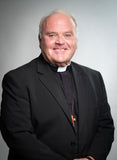 Hi readers, it seems you use Catholic Online a lot; that's great! It's a little awkward to ask, but we need your help. If you have already donated, we sincerely thank you. We're not salespeople, but we depend on donations averaging $14.76 and fewer than 1% of readers give. If you donate just $5.00, the price of your coffee, Catholic Online School could keep thriving. Thank you. Help Now >
Hi readers, it seems you use Catholic Online a lot; that's great! It's a little awkward to ask, but we need your help. If you have already donated, we sincerely thank you. We're not salespeople, but we depend on donations averaging $14.76 and fewer than 1% of readers give. If you donate just $5.00, the price of your coffee, Catholic Online School could keep thriving. Thank you. Help Now >
But Rome, conquered by the hordes of Alaric, had fallen from her political rank, and henceforth the evolution of Byzantine painting must be followed at Ravenna and Constantinople.
B. Monumental Painting to the Iconoclastic ControversyRepresenting deeds rather than ideals, events rather than symbols, the Byzantine School endowed Christianity with a complete system of representation of all types, some of which are still used, and once for all formulated the essential traits of the great scenes of religious history. ( See BYZANTINE ART.)
In its early period Byzantine painting was strictly realistic. The mosaics, e.g., on either side of the choir of S. Vitale at Ravenna, show the Court of Justinian and Theodora sickly, dissolute figures—the men, coarse; the women, bleached and bedizened, overladen with jewels and dressed in the extreme of luxury unforgettable personifications of a corrupt and dazzling life. This care for documentary exactitude was applied also to the past: historic characters were treated as contemporary. The Christians of the first three centuries had been obliged to content themselves with conventional types, without individual character, for their figures of Christ; but here Byzantine art raised new questions. The Christological disputes of the time necessitated new dogmatic definitions. In painting a certain school, appealing to a text of Isaiah, maintained that Christ was hideous. In answer to these, appeal was made, in the fourth century, to the so-called "Letter of Lentulus to the Senate" . Christ, according to this document, had blue eyes and light hair falling smooth to His ears, then in curls over his shoulders. One recognizes here the desire to give to the figure of the Saviour a certain majestic beauty embodied in the stereotyped traits of a portrait which leases no room for the play of fancy.
The same process of determination went on at the same time for the principal characters of sacred history, for the Blessed Virgin, the Patriarchs, and the Apostles, and each of these pictorial types acquired the force of a law. The Council of 692, for example decreed that Christ should be represented as the Lamb. This scrupulosity extends to accessories and embellishments: at San Vitale, Ravenna, the "Hospitality of Abraham " has for its setting a vast verdant landscape; at San Apollinare Nuovo, the city of Classis and the palace of Theodoric are accurately represented. In Gospel scenes veritable reproductions of Jerusalem were aimed at. The care for exact representation was, at the same time, counteracted by the passion for grandeur and splendour of effect which dominated all Byzantine painting. The latter tendency arose partly from the exigencies of decorative work and the inexorable laws governing monumental style. Decoration implies work intended to be viewed from a distance, and therefore simple in outline and colossal in scale, reduced to absolute essentials strikingly displayed on a wall-surface. Hence certain conventions, the result of optical laws : few gestures, little action, no agitation or confusion. The countenances have an impassive and fixed expression, as the tragic actor, in the Greek theatre, assumed mask and cothurnus, and chanted the solemn lines to a recitative.
This theatrical and imposing style was, however, less artificial than might be supposed. It naturally ascribed to the personages of the sacred drama the ceremonious dignity of the Byzantine world, modelling the past or the present. One of the most marked effects of these ideas is the repugnance to representing suffering and death. At San Apollinare Nuovo, in the portrayal of the Passion, not Christ, but his executioner, carries His Cross. The artist reverently omits the scene on Calvary, and indeed Christian art for a long time observed the same reticence. But on the other hand there is the taste for noble composition the love of symmetry, the striving after grandiose and solemn effects. From these same ideals of pomp and grandeur resulted a type of expression in harmony with them, monumental painting in the more solid, more luxurious style of mosaic. This was already an ancient art, well known to the Alexandrians practised, also by the Romans, who used it chiefly for the pavements of their villas. But it was reserved for the Byzantines, who applied it to mural decoration to discover its true resources.
C. From the Iconoclast Controversy to the School of Mount AthosThe Iconoclast controversy (725-850) arrested the development of this powerful school at its height. The movement originated in Islam as a fierce outburst of the Semitic idealism of the desert. The Iconoclast emperors were by no means barbarians but enlightened princes dilettanti in their way, very often devotees and theologians ; such in particular were Leo the Isaurian and Theophilus. These emperors prided themselves on being worshippers "in spirit and in truth ", and proscribed art only in its " idolatrous ", or religious, applications. Feminine devotion in the end triumphed over these scruples. Meanwhile there had been wide devastation, the convents had suffered especially; and when the veneration of images was re-established, nearly all the churches had lost their ornaments, the mosaics had been torn down, and the frescoes whitewashed. As often happens, however, the Church came out of the conflict more vigorous than ever. A new Byzantine School, very different from the first, and a second golden age were to commence. The first Byzantine School was an historical one the second was wholly liturgical and didactic. Each decorative element assumed a symbolical value. Christ the king surrounded by the celestial hierarchy looks down from the vaults; in the sanctuary, behind the altar, reigns the Virgin seated, holding the Child in her lap as a figure of the Church, the "living throne of the Almighty", the rest of the apse presents the precursors of Christ, the bishops, doctors, and two great Eucharistic scenes the "Communion of the Apostles " and the "Divine Liturgy "; on the walls are developed the lives of the saints and martyrs and that of Christ. In the story of the Gospel the order of time is broken and from the mass of miracles a few great scenes are detached which the Church celebrates at the twelve principal feasts. Two essential ideas are brought into prominence: the Redemption and the Resurrection — the scene of Calvary and the Descent into Limbo. In the narthex, the Life of the Virgin assumes a new importance, while the Old Testament , on the contrary, tends to disappear.
Four important monuments in the East mark the apogee of the new style, these are:
- St. Luke in Phocis,
- the Nea Moni of Chios,
- the beautiful church of Daphni near Athens and,
- in Russia, that of St. Sophia at Kiev.
A more important fact is that at this time the Byzantine style conquered the West and became truly universal. At about the same time the West was undergoing a singular upheaval: the old feudalism was separating itself from the soil and setting itself in motion. For two centuries the exodus of the Crusades was to continue, marking the beginning of a new civilization in Europe. Byzantine colonies appeared in Italy, notably those of Venice, in the North and of Sicily, in the South, forming hotbeds of Byzantism at the two ends of the Peninsula. Within thirty years (1063 - 95) Venice accomplished the marvel of St. Mark's which she was to go on decorating and perfecting for three centuries (the narthex is of the thirteenth century, the baptistery of the fourteenth century). In the neighbourhood of Venice there are examples at Torcello, Murano, and Trieste, while the twelfth century witnesses in Sicily, under the Norman princes the appearance of four incomparable churches: that of Martorana (1143), that of Cefalù (1148), the palace church at Palermo (c. 1160), and the Cathedral of Monreale (c. 1180). Of all these masterpieces St. Mark's is the best known. but only from the Pantocrator in the apse at Cefalù is it possible to realize to what beauties of nobility and melancholy, and to what majesty of style, the art attained.
For the sake of completeness, mention must be made of the numerous icons, the various types of the Madonna (Panagia, Nicopoeia, Hodegetria), of the miniature paintings in manuscripts which were important for the diffusion of motives, of enamels such as those in the Pala d'Oro of St. Mark's , and of the small portable mosaic pictures, like the valuable diptych preserved at the Opera del Duomo at Florence. The task of the Byzantine School was accomplished, but it did not at once disappear. In the fourteenth century it produced the fine mosaic cycle of Kahrie-djami and at the beginning of the fifteenth century, within the solitude of Athos, shut in by the Moslem world. it continued to produce and covered all Eastern Europe with countless paintings of the school of Panselinos. With the twelfth century, however, it had fulfilled its purpose, and the further development of religious painting was in the West.
III. RELIGIOUS PAINTING IN THE WEST, TO THE CINQUE CENTO A. North of the Alps
Through the medium of the monks and the Crusades all Europe was rendered fruitful by the Byzantine School. From the Byzantine a Western art was to develop, in which the loss in external luxury was gradually supplied by pliancy and power of expression. A distinction must here be made between the art of the countries north of the Alps, and that of the southern countries. Little need be said of the former: the Romanesque churches seem to have been very rich in paintings, but most of them are lost, and in the Gothic churches, which soon after began to be erected, there was little room for mural painting; stained glass took its place. But the personality of the artist was scarcely felt in this art, and as to drawing and subjects, stained glass is scarcely more than a reflection of miniature painting. Its study, therefore, has but a purely iconographic interest. It began in France with the windows of St-Denis (1140-44), and the school of St-Denis spread throughout the North, to Chartres (c. 1145), York, Le Mans (c. 1155), Angers, and Poitiers. During the following century the school of Notre-Dame-de-Paris played the same part.
The iconography of these windows is essentially symbolic, and the allegorical spirit of the Middle Ages is nowhere more apparent. It was an old Christian idea that each person and fact of the Old Testament was an image prefiguring a person of the New. This idea only expanded with full wealth of detail in the Gothic art of the thirteenth and fourteenth centuries. With wonderful subtlety of interpretation the attempt was made to discover the most unforeseen, and sometimes the oldest, relations. Books such as those of Rabanus Maurus , or the "Speculum ecclesia" of Honorius of Autun, or the "Glossa ordinaria" of Walafrid Strabo, must be read to obtain an idea of the spirit in which the Middle Age read its Bible and pictured it. In the "Bestiaries", too, which supplied material for this art, there is a fantastic natural history, a singular menagerie, each curiosity of which conceals some pious allegory. The material universe was transformed into a sort of vast psychomachia, an immense system of metaphors. No other school ever equalled this astounding idealism.
B. In Italy(1) Giotto and the Giottesques
After the fall of Rome and the Empire, Italy was for centuries in a most miserable condition. In the sixth and seventh centuries the Iconoclast reaction sent in the direction of Rome a host of Orientals, principally monks, who were the chief victims of the persecution. It is probably to these Greeks that we owe the frescoes, doubtless dating from the seventh century, which were discovered, in 1898, at Sta Maria Antiqua.
We ask you, humbly: don't scroll away.
Hi readers, it seems you use Catholic Online a lot; that's great! It's a little awkward to ask, but we need your help. If you have already donated, we sincerely thank you. We're not salespeople, but we depend on donations averaging $14.76 and fewer than 1% of readers give. If you donate just $5.00, the price of your coffee, Catholic Online School could keep thriving. Thank you.Help Now >
Under the influence of the great Abbot Desiderius the school of Monte Cassino assumed the leadership in an artistic movement which was to extend as far as Cluny. Some eleventh-century monuments, such as the church of S. Angelo in Formis, have preserved frescoes which attest the importance of this Benedictine school ; but its traces are to be found chiefly in miniatures, and especially in volumes of a particular kind, such as the "Exultet rolls" (see EXULTET ). This style spread throughout Italy in the twelfth century, but soon declined. In the churches and museums of Tuscany are to be found a great number of icons, madonnas and crucifixes, such as the miraculous Christ preserved at St. Clare of Assisi, and which is said to have spoken to St. Francis. These works show to what a depth of barbarism the Byzantine school had fallen about 1200. Nevertheless it was still capable of producing beautiful work. The Madonna of Guido of Siena, for instance, preserved in the Public Palace, and dated 1221 (not 1281, as according to Milanesi), proclaims a veritable renewal of the ancient formula, tempered by the grave and gentle Siennese mysticism. This is still more obvious in the works of the great Duccio, the Rucellai Madonna (1285) or the "Madonna Maesta" (1311).
Such was the persistency of the Byzantine movement at Siena, but a movement in another direction issued from Rome in the middle of the thirteenth century. Excavations have brought to light at S. Maria in Trastevere a cycle of very important frescoes of which Ghiberti, in his "Commentary" gives Pietro Cavallini as the author. The chief scene represents the Last Judgment. It is impossible to praise excessively the beauty of this composition, the nobility of the draperies, the majesty of the types. Ancient art undoubtedly exercised a powerful influence on Cavallini, as on his contemporary, the sculptor Nicholas of Pisa. In the thirteenth century a revival took place at Rome which foreshadowed the Renaissance of a later age. Unhappily, few of its monuments remain, but the mosaics of S. Maria in Trastevere that of St. Mary Major, by Jacopo Torriti (1296), an the Genesis frescoes of St. Paul Without the Walls known through drawings in a manuscript at the Vatican reveal the importance of this ancient Roman school. The same compositions are also found in the upper church at Assisi, which was to be the cradle of Italian painting. It is now proved that these scenes were the work of Cavallini and his school. There is nothing to prove that Cimabue did not work here, but he would have done so only as a pupil of the Roman school (see CIMABUE). This is also true of the great Giotto in his earliest dated works: the Navicella of St. Peter's (1298), the Stefaneschi retable and the Jubilee fresco painted in 1300 at St. John Lateran. It was otherwise with his second sojourn in Rome, for his early Assisi frescoes the 28 scenes of the "Life of St. Francis" (c. 1293) are wholly in the Roman manner. At Rome, therefore in the thirteenth century was created the giottesco style, the dolce stil nuovo which was to charm Italy for a hundred years. (See GIOTTO DI BONDONE.) Giotto instilled into the painting of age the wonderful poetry of Franciscan Christianity. St. Francis has been called the Father of Italian art and the saving is true if taken with a certain elasticity of meaning. Both he and St. Dominic rejuvenated and reanimated the Church. The history of religious art down to the Reformation and the Council of Trent could only be accurately written in the light of this great historic fact. All that Byzantine and early medieval art had represented as dogmas assumed the stirring character of life. To say that art became secularized would be to risk miscomprehension, but in truth, from being intellectual and theological, it became democratic and popular. Faith became visualized. The whole effort of the painters, as well as of the people, was to imagine as vividly as possible the life and sufferings of Christ . A multitude of dramatic elements developed in Christianity, and originated a sort of rudimentary theatre. (See ITALY, ITALIAN LITERATURE; JACOPONE DA TODI.)
We ask you, humbly: don't scroll away.
Hi readers, it seems you use Catholic Online a lot; that's great! It's a little awkward to ask, but we need your help. If you have already donated, we sincerely thank you. We're not salespeople, but we depend on donations averaging $14.76 and fewer than 1% of readers give. If you donate just $5.00, the price of your coffee, Catholic Online School could keep thriving. Thank you.Help Now >
All these characteristics began to show themselves in painting also. At Padua, in 1306, Giotto outlined the earliest and best formulated of his school in the "Life of the Virgin", closely linked with the history of the Passion. The painter retained only the pathetic elements of Christianity. A number of new scenes appeared, while the old ones were enriched with countless new features. The picture is filled with figures, gestures are softened, expression grows tender and human. " Giotto ", says Vasari, "was the first to put more kindness into his figures". During three centuries of development some scenes, such as the Nativity and the Epiphany, continued to grow in movement, expression, and picturesque effect. Symbolism and didactic intent are absent: painting ceases to have any object but to represent life. The teaching of Christ, the parables, and the sacraments disappear, to be replaced by scenes of sorrow and the drama of Calvary every moment of which is minutely treated in detail. What primitive Christian art avoided with a sort of modesty or fear now became its chosen and persistent subject. The striking feature of these pictures is a wholly new impression of familiarity and warmth.
After the great frescoes of the Life of St. Francis at Assisi a host of local saints and contemporary beati were honoured in like manner. In painting these contemporary lives the artists had to create traditions; therefore they painted what they saw—faces, costumes, assemblages of people. They became realists and observers. and these same tendencies appeared in their paintings of the Gospel. There was little need of invention: the theatre and its representations, the processions, and the tableaux vivants assisted their imagination. The following are some "Passions" of the Giottesque school, in chronological order:
- in the lower church of Assisi, by Pietro Lorenzetti (c. 1325);
- by Gerini, at S. Croce, Florence;
- by a Sienese master in the Neapolitan church of Donna Regina, or
- that by Andrea da Firenze (c. 1350) at the Spanish chapel ;
- lastly the splendid frescoes of Altichiero and Avanzi in the chapel of the Santo of Padua (1370).
But all this realism was never an end in itself: its object was to reach the emotions, and it made manifest the character of humanity in Christianity. Hence the many paintings of the Blessed Virgin, in which art incessantly sang to her the tenderest hymns of love. The Panagia of the Byzantines, the Virgin of the Middle Ages, Throne of God, Queen of Heaven, gave place to the Mother, the most beautiful, the sweetest, and the tenderest of women. After St. Bernard — il suo fedele Bernardo — St. Francis of Assisi , and St. Bonaventure, devotion to the Madonna became one of the chief Christian devotions. Schools competed as to which should paint the holiest and most exquisite Virgins, and none were more charming than those of Siena &151; Sena vetus civitas virginis .
The Madonnas of Simone di Martino , of the two Lorenzetti, of Lippo Memmi, and their successors began the incomparable poem to which Raphael, Van Dyck, or Murillo added perfect strophes, without, however, obliterating the memory of their ancient predecessors.
The same inspiration is evident in the paintings which represent the moral, didactic, or philosophic painting of that time, such as the frescoes of "Good and Evil Government" at Siena by the Lorenzetti (c. 1340), those of the Church militant and the Church teaching in the Spanish Chapel (c. 1355), or those of the "Anchorites" and the "Triumph of Death" in the Campo Santo of Pisa (c. 1370), all showing the same popular and practical character. Such pictures have the force of a sermon ; there is no strictly artistic intention, but an obvious intention to instruct and impress.
This is also made clear by the celebrated allegories of the Franciscan Virtues, in the lower church of Assisi (c. 1335) and in the frequent repetition of the Last Judgment (by Giotto at Padua and the Florence Signoria; by Orcagna at S. Maria Novella, etc.). This theme of death and the Judgment was evidently a favourite one with the Mendicants: at Assisi and Padua are two frescoes representing a Friar Minor indicating a skeleton beside him. And hence the "Triumph of Death" at Pisa and the terrible "Dance of Death" of northern Europe.
This popular art required popular modes of expression. Cavallini and Giotto still made mosaics, and Cimabue is best known to us as a mosaicist. But this slow and expensive method was unsuited to a democratic, sentimental, and impassioned art, while fresco, which had never been abandoned even during the Byzantine period, offered to the new ideas a more plastic and animated mode of expression. With less material opulence, the latter process was rapid, cheap and apt at reproducing the undulations of life, expressing at once the exactness of nature and the emotion of the artist. Thereby a new element entered into the execution itself, an individual element of sentiment and spontaneity only limited by the conditions of mural painting and the exigencies of an art always somewhat oratorical. Inebriated, as it were, with this new liberty, the Giottesque painters covered Italy with innumerable paintings. Indeed, this school, as a whole, despite grave faults, constitutes the richest and freest fund of religious painting.
(2) Masaccio and His Age
But it must be acknowledged that the Giottesques formed a popular school which was too often satisfied with worthless improvisation. The task of imbuing painting with artistic feeling was that of the two great painters, Masolino and Masaccio, the latter especially, in his frescoes in the Carmelite chapel at Florence (1426) sounding the keynote of the future. Nevertheless, despite their seriousness of conception and aim, the religious element of these frescoes is scarcely to be taken into account. There are evidences of great progress in the art, the nobility of ideas, the elevation of style, the seriousness and grandeur of the work, but the gain of Christian feeling and piety is less manifest. But, Masaccio's powerful naturalness was for a time in harmony with the mystic sense, and religious art then yielded perhaps its most exquisite flowers. The works of Gentile da Fabriano , such as the "Adoration of the Magi" (1423; Academy of Florence), those of Pisanello, such as the "Legend of St. George" (c. 1425; St. Anastasia , Verona ), and in a lesser degree those of the Milanese Stefano da Zevio breathe the inimitable grace of a pure and holy joy, which is still more charmingly apparent in the works of the Camaldolese Lorenzo Monaco, and especially in those of the Dominican Fra Giovanni da Fiesole, whose genius won for him the surname of Angelico.
Angelico's disciples did not reach his level, but a youthful charm distinguishes the spiritual paintings of Benozzo Gozzoli, whose "Adoration of the Magi" in the Riccardi chapel is one of the most perfect works of the Renaissance. while his "Genesis" frescoes in the Campo Santo of Pisa (1469-85) will always be loved for their exquisite figures amid rich landscapes. But perhaps this pious joy never inspired anything more lovable than the works of the old Umbrian masters Ottaviano Nelli, Allegretto Nuzi, Domenico Bonfigli, and Boccati da Camerino. The early Renaissance was a fortunate period, in which the simplicity of the soul was not marred by the discovery of nature and art. Even the poor Carmelite, Fra Filippo Lippi , unwilling monk as he was, whose restless life was far from exemplary, was animated by true and delicate piety. His "Nativity" (Berlin), his "Madonna" (Uffizi), and his "Adoration of the Holy Child" (c. 1465, Louvre) recall Angelico.
C. The Fifteenth Century in the NorthWhat Masaccio's frescoes were for fifteenth-century Italy, that and much more was the retable of the Van Eycks for the rest of Europe. This colossal work was begun in 1420, completed and set up in 1432. Throughout the fifteenth century the art of the schools of the North retained the allegorical and symbolical character which marks this great work. Such books as the "Speculum humanae salvationis" or the "Biblia pauperum" dominated iconography and furnished artists with their favourite subjects. But, with all this, in Flanders naturalism was unrestrained, that of the van Eycks making even Masaccio's seem vague and abstract. A portion of the change accomplished by them is foreshadowed in the works of the Limbourgs (see LIMBOURG, POL DE). To the revolution which they effected in the manner of beholding corresponds another in the manner of painting. The whole fifteenth century spoke of the "invention of the van Eycks ": it is hard to say in what this consisted, but if they did not, as was believed, discover oil-painting. they certainly invented new processes and a new style. Undoubtedly this realism lacked taste and charm. The types were common, vulgar and middle-class, and these faults were even exaggerated by the disciples of the school &151; Jean Daret, Ouwater, Dirck Bouts, Van der Goes, and Petrus Cristus. The school's photographic impassability, on the other hand, was suddenly offset by the equally exaggerated and somewhat contorted passion of the Brabançon Van der Weyden, at once a realist and a mystic. Such as it was, this robust, school conquered Europe in a few wears, even Italy feeling its powerful influence. In France, Simon Marmion, Nicolas Fremont, and Jean Fouquet were little more than somewhat refined and gallicized Flemings. In Spain it suffices to mention Luis Dalmaù and in Portugal, Nuño Gonçalez, both being pure Flemish.
German painting, on the other hand, while it owed much to the neighbouring; Flemish school, remained much more original in spirit. In it is found the deep and tender sentiment lacking in the school of the Low Countries, a popular mysticism derived, not from books, but from the interior treasures of the soul. The school which produced (c. 1380) the Clarenaltar of Cologne and (c. 1400) the delightful little "Paradise" of Frankfort obviously possessed but mediocre gifts; its sense of form Bas often defective, but even the piety of Angelico did not speak a purer language. A superior plastic education produced the work of Stephan Lochner, the fine Dombild (1430), the "Madonna of the Violet", and the marvellously sweet "Madonna of the Rose Garden". From this school was descended the most famous of the Northern mystics, the tender and graceful Memling. In his work a new aristocracy, that of sentiment, transfigures the Flemish opulence. The same moral delicacy and familiarity with Divine things sweeten and spiritualize the works of Gerard David, and especially of Quentin Massys, who became a painter through love. At the end of the fifteenth century there was no German town or province which had not its local school. For a long time only two of these were known or regarded: that of Cologne, with its anonymous masters, the Master of the Passion of Lyversberg, the Master of the Death of Mary, the Master of the Holy Family ( Heiligensippe ) and, most powerful of all the Master of the Bartholomäusaltar ; and the school of Nuremberg, with its two famous painters, Wohlgemuth and Pleydenwurff. But in reality no corner of Franconia, Suabia, Alsace, or the Tyrol remained sterile. It was a popular art, localized sentiments and extremely incorrect, often coarse in form, but refined in soul even to affectation, and which in its pious imagery expressed better than any other certain ideas of sympathy and tenderness. There is nothing more thrilling than the Passion of Hans Multescher nor more appealing than the altarpiece of St. Wolfgang by the Tyrolese Michel Pacher. Elsewhere in Germany there were other admirable stylists, such as Hans Baldung and Conrad Witz at Fribourg and Basle, foreshadowing the perfection of Holbein.
But the great Albrecht Dürer was to express all that was most intimate in Germanic religion, and beautiful as were his pictures he expressed the deepest meanings in his prints. This more direct and less expensive art produced for the masses, satisfied the German demands for popularity and individuality. To this Dürer's genius was wholly devoted, and art does not possess more moving masterpieces than the "Apocalypse" series (1498), the "Life of the Blessed Virgin" (1506), the "Little Passion" (1509), and the Great Passion" (1510). But side by side with this contemplative, intimate, and noble spiritual art was a second tendency, no less thoughtfully but impassioned, violent, dramatic, and which went to extremes in the search for expression and the mania for the pathetic. It was inspired by the mystery plays. All technical progress and perfection of realization were utilized to express emotion. It began with Van der Weyden, Memling did not escape it in his Munich picture of the "Seven Sorrows of the Blessed Virgin", Massys painted blood-besprinkled Holy Faces and Magdalens with reddened and streaming eyes, Dürer's "Passions" terrify by their intensity of sorrow, but the most tragic of all was Mathias Griünewald, whose terrible "Crucifixions" at Colmar and Stuttgart are like the nightmare of a barbarian visionary. This love of the horrible became a genre. Infernal fantasies, the dreams of an unhealthy imagination, haunt the thoughts of Jerome Bosch, while, on the other hand, idyllic insipidity and childishness appear in the "Holy Family" and "Flight into Egypt " of Cranach and Patenier. At this juncture came the Reformation, which destroyed painting in Germany.
IV. THE CINQUECENTO AND THE LATER SCHOOLS A. Tuscany, Umbria, and Rome
The two tendencies observed in the North, naturalism and pathos, developed also in contemporary Italy. Protestant criticism has greatly exaggerated the irreligion of the Renaissance. Undoubtedly some painters, absorbed by problems of expression and the study of atmosphere, models, and perspective, neglected religious emotions. At Florence especially there mere a number of artists who saw in their craft only a question of form. Form, as a matter of fact, owes much of its progress to the studies of Castagno,










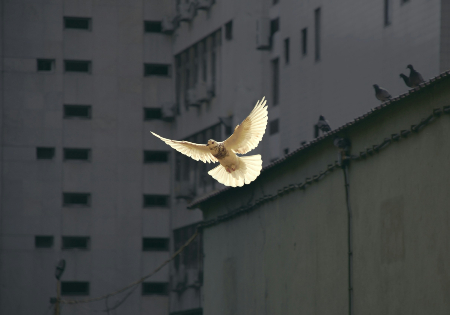
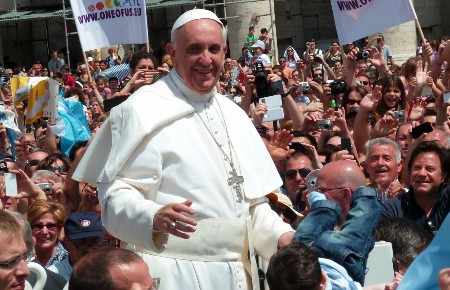

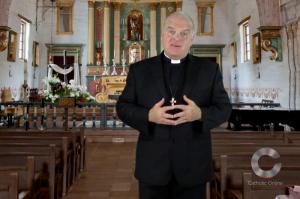 Daily Readings for Friday, April 26, 2024
Daily Readings for Friday, April 26, 2024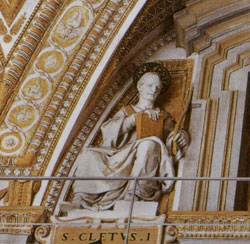 St. Cletus: Saint of the Day for Friday, April 26, 2024
St. Cletus: Saint of the Day for Friday, April 26, 2024 Prayer before the Closing of the Day: Prayer of the Day for Friday, April 26, 2024
Prayer before the Closing of the Day: Prayer of the Day for Friday, April 26, 2024